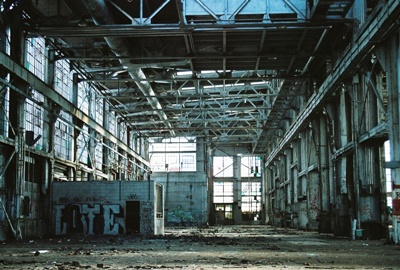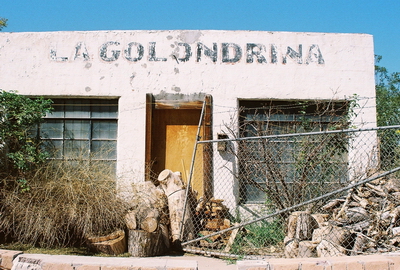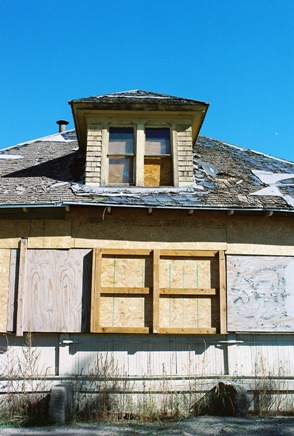 I'd hoped to get inside but the house was boarded up tight. Apparently it had often been wide open, but when I got there thick plywood covered every entrance. All I could do was walk around the outside and take in some of the remaining architectural features. The back shed was accessible but uninteresting and a homeless person had recently taken up residence. After awhile I laid a hand on the 103-year-old house to pay my last respects and then headed home. On Monday, following a whim, I decided to stop by once again and saw that there would now be no problem getting inside. The house was already dark due to the boarded-up windows and the sun was setting, so I didn't have much time, but I tried to get a few decent shots. By the time you read this, the Werner-Gilchrist house will be no more, living on in a few photos and, of course, that episode of Breaking Bad in which it appeared as a drug den. So, here's its story.
I'd hoped to get inside but the house was boarded up tight. Apparently it had often been wide open, but when I got there thick plywood covered every entrance. All I could do was walk around the outside and take in some of the remaining architectural features. The back shed was accessible but uninteresting and a homeless person had recently taken up residence. After awhile I laid a hand on the 103-year-old house to pay my last respects and then headed home. On Monday, following a whim, I decided to stop by once again and saw that there would now be no problem getting inside. The house was already dark due to the boarded-up windows and the sun was setting, so I didn't have much time, but I tried to get a few decent shots. By the time you read this, the Werner-Gilchrist house will be no more, living on in a few photos and, of course, that episode of Breaking Bad in which it appeared as a drug den. So, here's its story.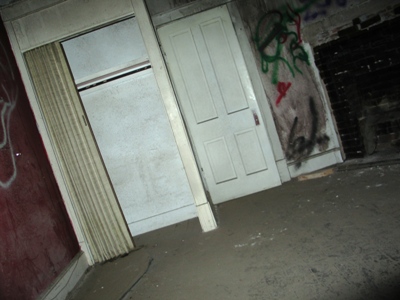
The tale of the Werner-Gilchrist house begins with Colonel D.K.B. Sellers. Apparently a bit of a character, he was not actually a colonel. In the very early 1900's, it was Colonel Sellers that petitioned to give Railroad Avenue, which he believed to be a poor name for a street that extended beyond the rail line, a new name, Central, as he began to sell commercial lots in Albuquerque. Quickly successful in his name-change bid, the Colonel continued developing, moving into what is now the University Heights Addition, a square-shaped collection of streets just south of the University of New Mexico campus. In Nob Hill, he would go on to build a rather nice log cabin and a gravity-based water tank that is now a house. In 1912, the Colonel was even elected Mayor of Albuquerque, but, a few years earlier, in lieu of financial compensation, Colonel Sellers had paid his secretary, Laura Werner, by giving her half of an undeveloped block on what is now Cornell Drive.

Ms. Werner and Ralph Gilchrist, her son-in-law, built the house in 1908 on the corner of what is now Cornell and Silver. Based on a layout used for officer's homes in Territorial forts following the Civil War, the design, known as "hipped box," incorporated a wood-framed hip roof with dormer windows on each side. The load-bearing walls were made of 16" thick adobe bricks and the foundation was stacked stone. The doors, window frames, and trim were all wood and a wide entrance hall ran the full length of the first floor. The second floor was a single large room. At the time, this style of construction was in favor among the upper classes. I was impressed to see that every room aside from the kitchen had a fireplace.
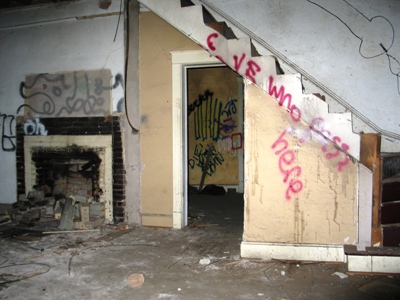
Ms. Werner's reclusive daughter, Nora, occupied the house until she died in 1981, having lived into her nineties. The house had been vacant since about that time. In 1982, it was added to the National Register of Historic Places, but, as we've seen, that designation does not necessarily confer any real protection. In 2006, in response to a blocked attempt at demolition the year before, the house was officially named an Albuquerque landmark, a title which also could not save it.
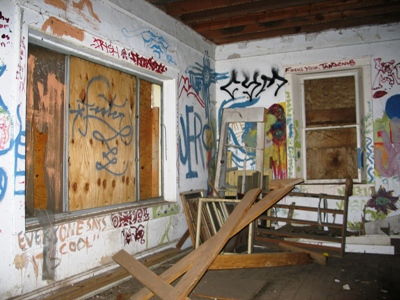
Much as with the recently demolished Aztec Motel (it's been a tough year for historic buildings in ABQ), no one ever said they wanted the Werner-Gilchrist house torn down. There was an effort to preserve and restore the house which spanned 30 years, but continued neglect caused extensive damage and the current owner of the property was eventually cited for housing code violations. That owner, Jim Trump, executive director of Build New Mexico, stated that he had initially hoped to restore the home. But times are tough and money is tight and the house was too far gone. Thus, the Werner-Gilchrist house is no more.
Meanwhile, across town, Albuquerque is finally getting a Chipotle Grill.
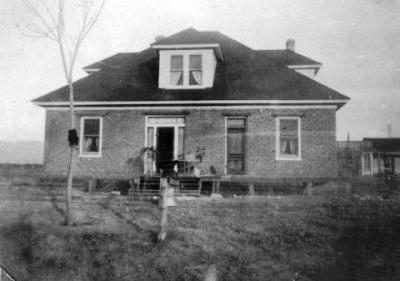
I grabbed the information for this post from the aforementioned Alibi article and the house’s short Wikipedia entry. The photo of the house just after construction in 1908 comes courtesy of the City of Albuquerque, although they don’t know it.
I've got a ton of stuff lined-up for the future, from Billy the Kid's (controversial) grave to the haunted Shaffer Hotel and beyond. There’s plenty to keep busy for awhile.
